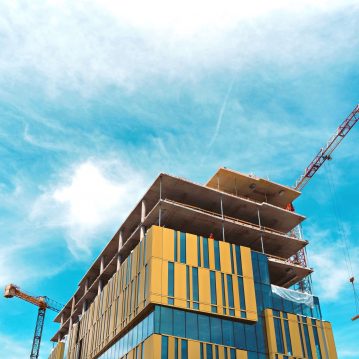Buying a flat is an exciting prospect. However, the documentation that comes with it can be a little bit daunting. If you are feeling nervous about signing a leasehold agreement, don’t worry — we’ve put together some advice on how to read and understand a lease.
Property management has its complexities, so it’s a good idea to take your time to go through the information in your lease slowly to avoid confusion. And remember, you can always consult a solicitor if there’s anything you’re unsure about.
What to expect with a lease
When you buy a leasehold property, you purchase the right to occupy a building for a set amount of time. A lease is essentially a contract between you and the freeholder, who owns the land and the building outright.
As a vital document that proves you have the right to occupy your flat, it’s essential that you know how to read and understand your lease. The lease also outlines both the leaseholder and freeholder’s responsibilities and how the building is managed. It is particularly crucial to know this information in case you decide to apply for the Right to Manage or live in a building looked after by an RTM company.
Basic information to be aware of
There can be a fair bit of industry jargon in your lease, so here are a few terms to be aware of.
‘Parties to the lease’ refers to the people or companies involved in the contract. Usually, this will be you (as the leaseholder) and the freeholder, but it may include a Right to Manage (RTM) company.
The property is usually referred to as ‘the demise’ and will describe where your property ends and the rest of the building starts.
Sometimes, terms will be used interchangeably. In a leasehold agreement, you may see the leaseholder referred to as the ‘tenant’ and the freeholder as the ‘landlord.’
Lease checklist
Depending on the type of building your new flat is in, the details within your lease agreement may vary. However, it will most likely contain the following sections:
Length of the lease
Leases tend to be long-term, often 90 or 120 years. They can be up to 999 years! However, some can be as short as 40 years, so it’s important to check the duration before signing.The closer to the end of the lease your property is, the more its value decreases.
Rights you are granted with the property
This part of the lease will detail your access rights and rights of way in shared areas of the building or land around it. If you have to cross parts of the property you don’t own to get to your apartment, the lease must offer you a right of way for access.
Regulations that you have to adhere to
Regulations you have to follow as a leaseholder will vary depending on where you live. However, common regulations include stating whether or not you’re allowed pets and if you must keep the floors carpeted.
Tenant/ leaseholder’s obligations
This section outlines what you are responsible for. For example, the ground rent and service charges you must pay to the freeholder, any administration fees, and any restrictions on subletting.
Landlord/ freeholder’s obligations
The freeholder must also fulfill certain obligations, which will be detailed here. For instance, the landlord will be responsible for repairing structural and communal parts of the building and organising insurance.
RTM
It’s worth noting that, if a landlord fails to fulfill their obligations, tenants have the opportunity to seek the Right to Manage (RTM) and take control over how the property is run.
If you’re interested in learning more about block management, right to manage and how a property management company can help, why not contact us today? At Adam Church, we have a dedicated team of managers, administrators and bookkeepers in Bristol, Bath and surrounding areas who can make sure your building gets the care it needs



